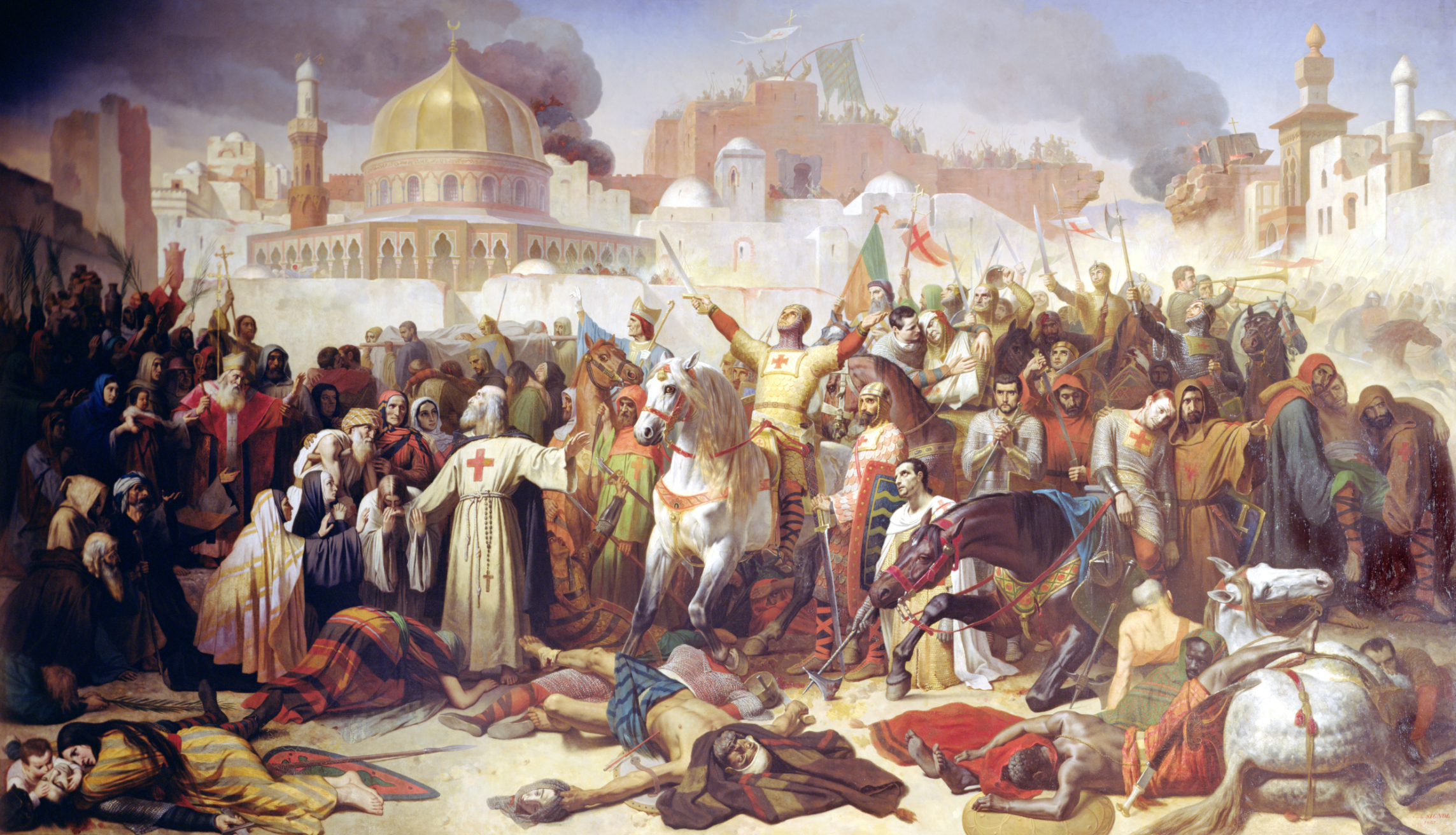The Crusades
The Medieval Period
Émile Signol, Public domain, via Wikimedia Commons
The Roman (Byzantine) Empire had lost two-thirds of its territory to the Islamic Caliphate during the eighth and ninth centuries. After a brief recovery in the late tenth century, the eleventh century saw the arrival of the Seljuk Turks into Anatolia (modern-day Turkey, so you can see where this is going.) The Turks were nomadic people from the Eurasian steppe, who specialized in horsemanship and archery. The heavily armored Romans had trouble keeping up with their quick maneuvering. In 1071, the Romans lost an entire army to the Turks at the Battle of Manzikert; Emperor Romanos IV Diogenes was captured and the Romans began to lose control over their eastern border.
In 1095, Emperor Alexios Komnenos wrote to Pope Urban II, asking for military aid against the Turks. He hoped to recapture the city of Nicaea, which was important as the site of the first church council and very close to Constantinople. Western Europe responded with the First Crusade. Whereas Emperor Alexios had been hoping for a few thousand mounted knights, the West sent an 80,000-man army, which not only recaptured Nicea, but the rest of western Anatolia and continued south to reassert Christian control of Syria, culminating with the recapture of Jerusalem in 1099. Although the European knights who took these lands had technically sworn allegiance to the Roman Emperor, they really ruled the area themselves as the Crusader States.
A Second Crusade to retake the Syrian city of Edessa in 1147 was a failure, and the Islamic armies of the Ayyubid Caliphate under their leader Saladin retook the whole area in 1187. This prompted the Third Crusade in 1189, famously under King Richard "Lionheart" of England; however, the crusaders once again failed to take Jerusalem. The Fourth Crusade set out from Venice in 1202, intending to re-capture the Egyptian city of Alexandria, but due to the machinations of the Crusade's leadership, two years later wound up sacking Constantinople instead.
Political tensions and theological disputes between East and West, over issues such as papal authority and the filioque clause of the Nicene Creed, had been brewing for some time. In 1054 a papal legate had attempted to excommunicate the Patriarch of Constantinople, and been excommunicated by him in return. However, it may have been the sack of Constantinople during the Fourth Crusade more than anything else that cemented the Great Schism, the separation of the Christian church into an Eastern faction, called Eastern Orthodoxy, and a Western faction, called Roman Catholicism.
